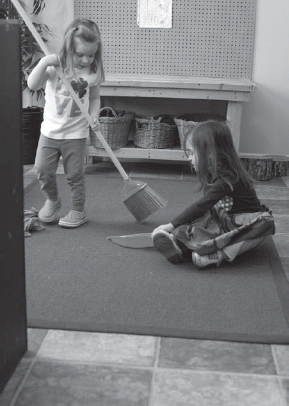![]()
Overview
Over the past few decades, as the kindergarten curriculum has been pushed down into preschool classrooms, many early learning programs have become more focused on pushing children to attain a checklist of academic skills (“Can she count to one hundred? Check! Can she spell her name? Check! Has she stopped making the letter s backwards? Check!). In some settings, this push to formal academics has led to less focus on creating environments that help children learn self-regulatory skills. This means more and more children struggle with managing interpersonal interactions (“She did not say my headband was pretty today, so she is not my friend anymore!”) and their own self-control (“He would not give me the blue paint, so I punched him!”).
Included in the skills that make up executive function is self-regulation, or the ability to control one’s impulses. It means being able to avoid doing things, even when you want to do them (“I’m not going to pull her hair”); to stop doing things, even when you do not want to stop (“His face tells me I’m being too aggressive—I’m going to back off a bit so his Play Face comes back”); and to start doing things, even when you do not want to start (“I hate carrying my plate to the kitchen, but I’m going to do it anyway”). Self-regulation is not the same as obedience. Self-regulated people behave the same whether an authority figure is looking or not. Self-regulated people are able to delay gratification and suppress impulses. They are able to visualize potential consequences for possible actions and consider alternative choices. Self-regulation involves both social-emotional and cognitive behaviors.
![]()
In so many ways, learning is a fundamentally social act. From circle time in kindergarten, to study groups in college, to team projects in the workforce, sociability has always greased the gears of learning.
—Tony Bingham and Marcia Conner, The New Social Learning: A Guide to Transforming Organizations through Social Media
![]()
Self-regulation is important because the ability to manage yourself in the world is kind of important. It is also kind of something we will all be doing all our lives. If you poll a group of kindergarten teachers, you will find most would much rather start the school year with a room full of children who can wait their turn, delay gratification for a bit, and use the toilet without assistance than a room full of kids who cannot do those things, but who can count to a thousand, speak a bit of Russian, and read at a third-grade level.

How to Support It
1. Trust kids to do things on their own that they can do on their own. For example, let kids put on their own shoes or clean up their own mess after lunch—even if it is quicker and more efficient to do it for them.
2. Engage children in real-world work. For example, allow them to wipe tables after meals, help fold laundry, and sweep up the sand that was tracked in from the playground. These tasks help them learn responsibility.
3. Allow children to struggle with tasks and make mistakes. Learning to self-regulate requires learning to persevere, overcome obstacles, and move beyond failures and setbacks.
4. Let them play. Dynamic child-led play is filled with opportunities to practice self-regulatory skills.

Questions to Ask Yourself
1. Do you do things for kids that they could do on their own? If so, why?
2. Is your play environment more focused on children attaining academic skills than self-regulatory skills? If so, how can you make a few small changes that will change the focus?
3. How can you alter your daily schedule to support children in attaining and honing more self-regulatory skills?
Kids will really be attracted to the next chapter’s DIY project . . .